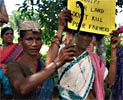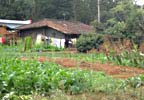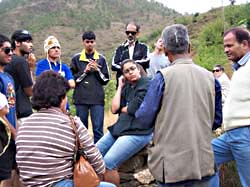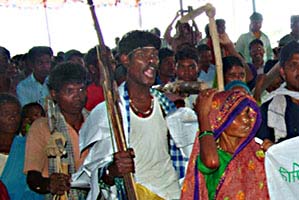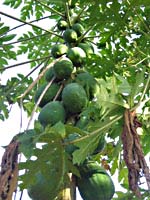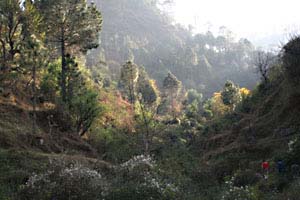Struggling to Overcome Waterproblems
Fragment from a Report of Students Visiting the Himalayas
at Sabli, near Rishikesh, Uttarakhand - as guests of HimconWe (students from New Delhi) went to “Ranichauri, Sabli village in Uttarakhand. Our stay in this place lasted for almost four days. While our stay we got to see the interventions that the friendly organization HIMCON had made in the village to save its ecology. In the upper reaches of this village thousands of trees were felled to build a university. This along with many other so called development activities had destroyed the local eco system and many of the ground water springs had disappeared. We also got to know that a large amount to diseases in that area is mainly due to the contaminated water.
In all we came across a cobweb of problems related
to water in that area and came very close to understanding that “water is life”.
On the other hand we were amazed at the enthusiasm of some of the local villagers towards
bringing about the change in the existing system. A Pani Panchayat (Water Forum) was
organized by the villagers in which the zest within their hearts was evident. In that meeting the
villagers took many decisions regarding cleaning and restoration of their springs.
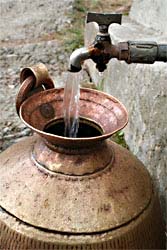 A traditional water carrying utensil locally called 'banta'.
A traditional water carrying utensil locally called 'banta'.
Within a few days we heard positive news about few of the springs being rejuvenated in the village by the initiatives of the villagers.
During our stay we also saw some positive and successful interventions such as the one at Kot village, where the HIMCON with the help of the villagers has been successful in setting up a plantation. This was also possible because of the presence of a spring in the area nearby. We came to know that the part of land was barren before the intervention of the organization. Later a drive was launched to search for a sustainable water source which was found around a kilometer away. The water was then brought to the land by the network of pipes transforming the land into a fertile one.
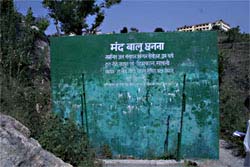 A Slow Sand Filter situated at Chaati Village in Tehri Garhwal district.
A Slow Sand Filter situated at Chaati Village in Tehri Garhwal district.
Another initiative which caught our imagination was the Slow Sand Filter, which could make the raw water almost 99.99 percent pure. The initiative of slow sand filter can serve not only the people in the mountains but also through out the country. The filter is a low investment and high purification option for the local community which cannot afford a lot of investment.”
Fragment from the students report: In the Adobe of the Great Himalayas - an account of the mobile workshop; no date, probably 2009. Whole report (163 KB)
Go to next article:
water forums in the villages
Go to overview articles about Himcon, with a lot of pictures!
